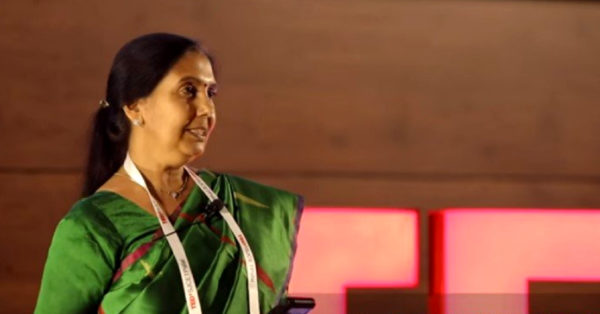On 15 August 2018, PM Narendra Modi announced ISRO’s ambitious Gaganyaan mission. ISRO has already started its preparations for its first Human Space Flight Project, and if successful, India will become the fourth country after USA, Russia and China to send a human to space. You can read more about the HSF Project here.
Speaking about the project, Dr K Sivan, the Secretary, Department of Space said, “We are excited by this announcement. It is a gift to the nation, and we feel proud. It actually energises us across our centres. We do not feel intimidated or tense.”
This formidable project will be headed by VR Lalithambika, who has been appointed as its Director. With several years of experience in the field, she has also conducted many successful missions.
Here are five things you should know about the lady:
VR Lalithambika has a Master’s degree in Control Engineering. She started her career at the Vikram Sarabhai Space Centre in Thiruvananthapuram, Kerala in 1988 and undertook several research projects there.
Her team works on optimising fuel for rockets such as the Polar Satellite Launch Vehicle (PSLV), Geosynchronous Satellite Launch Vehicle (GSLV) and Reusable Launch Vehicle (RLV).
She has 30 years of work experience with ISRO. Today, she is a core team member of the autopilot designers for PSLV and both launches of the GSLV.
Speaking to Deccan Chronicle, about ISRO’s successful missions, and her experience of working with such an esteemed organisation, VR Lalithambika said, “It is extremely satisfying to work in this organisation because even juniors are allowed to voice their ideas and concerns, and every mission is achieved through teamwork so that nobody’s ego comes in the way. We have set an example for all organisations, private or government, that teamwork matters most to achieve the most challenging goal.”
Her team undertook perhaps their most ambitious mission when they launched 104 satellites into space. It was an end-to-end test of all their systems. With several simulations on computers, preparations for the worst possible conditions and ensuring that each satellite stays in its right orbit without colliding with another, the team had a great task at hand. When the mission concluded, the team and ISRO won acclaim from across the globe.



Leave a reply